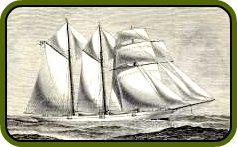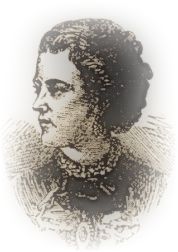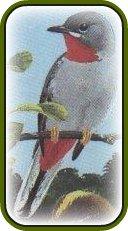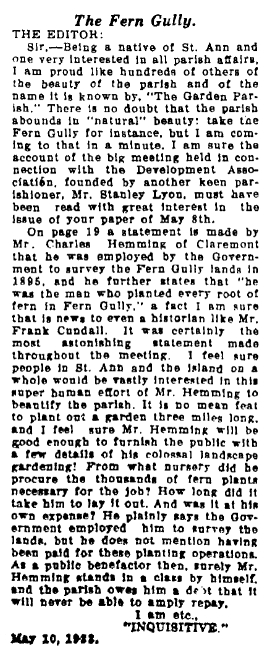Fern Gully over the years . . .

'The Fern Gully of the Parish of St. Ann, leading directly down in its extensions to the coast at Ocho Rios, has long been considered one of Jamaica's prime showplaces. I believe that almost all authorities now agree that the town's name is a corruption of the Spanish Las Chorreras, which signifies /"the cascades" or "waterfalls," rather than the "eight rivers" which is the translation of the contemporary epithet. And I
am sure that better experts I have long considered that Fern Gully was once a series of cascading falls, tumbling downwards to the sea and bringing the needed soils upon which the present community of Ocho Rios is built.'
Alex Hawkes, October 29, 1970



The surface seemed of smooth solid rock. It was a piece of antiquity as if it had been made or discovered by the Spaniards and then forgotten. Neither man nor beast appeared for miles nor watchman's hut nor provision ground nor any sign of human labour on stone or tree. Fine timbers grew untouched or lay rotting where they fell. All was old and grey, silent and solitary. After plodding mile after mile through that gloomy and lonely avenue without seeing a living thing or means of outlet I began to be anxious for some escape from the defile before night. At length the way brightened, the hills opened, the summit was reached, human habitations were discovered and by various though unusual paths I gained my destination. I had been misguided in taking that way. The right one called the barquadier road led from Frankfort wharf where I had spent the night with the watchman two years before, up the sides of the mountains and through the magnificent scenery of the White River with which I had the pleasure at a later period of making a delighted acquaintance.'
It would be good to find some earlier references to the 'gully road', which was certainly not noted by Lady Nugent in March 1802 when she passed through St Ann, by the coast road which she described as 'frightful; so narrow and rocky, and the precipices dreadful'. Who else described the 'gully road' in the first four decades of the 19th century?

Just recently, while tracking down another topic in 19th century Jamaica, I came across a reference to 'Moncrieff's Gully' in an account written by an anonymous visitor to Jamaica, presumably around 1860. The 'gully' described, from location and physical character, seems to be what was later named 'Fern Gully'. So far the only other use of this name that I have found is in a volume of the MANUAL OF CONCHOLOGY [study of mollusc shells] 1904, page 10, about a shell found in 'Jamaica: Moncrieff Gully, parish of St. Ann'. It will interesting to find out if anyone has references to the gully under this name.
pages 678-9
Scene and Customs in the West Indies - Jamaica
Descending the northern face of Mont Diabolo we soon entered a district the scenery of which again was quite unlike what we had hitherto met . . . .
We entered the wonderful volcanic fissure or ravine extending for two miles northwards called Moncrieff's Gully. Though the sun was still powerful his influence did not penetrate these deep shades. The gully is just wide enough to allow two carriages to pass while the rocks on either side tower abruptly to the height in some places of about three hundred feet but so dense is the foliage that it is only occasionally that the rock itself is detected. From every crevice and fissure and from the base to the summit trees large and small start forth, arch over, and interlace their branches, and tower far up into the blue chink of sky that is visible. They are densely covered with parasitical plants and seem to be corded together with singular vegetable ropes. These latter, in their turn, are also bound with convolvuli and spomseas [morning glory] which, springing from below, catch the depending suckers and climb up them. throwing out at every leafy articulation a red, white, yellow, blue, or purple blossom.
Occasionally a fallen tree, with its load of parasites and stay like ropes, bridges the ravine; and as a stray slanting beam broke through some slight opening, the effect was enchanting. I thought of the passage, "And the glorious beauty which is on the head of the fat valley shall be a fading flower."(1) Sometimes at a later hour, when the fire flies and glow worms begin to show their tiny lanterns against moss and fern and tree, the effect is beautiful, realizing much of the force of Quarles' quaint metaphor "Golden lamps hung in a green night" (2).
(1) King James Bible/Authorised Version
Isaiah 28:4 'And the glorious beauty, which is on the head of the fat valley, shall be a fading flower, and as the hasty fruit before the summer; which when he that looketh upon it seeth, while it is yet in his hand he eateth it up.'
(2) The quotation is actually from a poem by Andrew Marvell, not by Francis Quarles, who was a far inferior poet:
SONG OF THE EMIGRANTS IN BERMUDA
Andrew Marvell
He hangs in shades the orange bright
Like golden lamps in a green night,
And does in the pomegranates close
Jewels more rich than Ormus shows:
It is interesting that the word 'fern' occurs only once, perhaps relating the description more to the Rev Hope Waddell's grimmer account than to Marianne North's 'ferniest gully'!
'the very ferniest gully'
Marianne
North,
Recollections of a Happy Life, 1894, p110
(writing about her stay in Jamaica in 1871-2)
'I
was sorely tempted to take a
small vacant house there called Eden
Bower for ₤3 a month,
with endless
cocoanuts and grass for the
horses,
and allspice to pay my rent (fever
also in plenty). Prudence, however,
drove me back to the civilised
side of
the island over the Monte
Diabolo. Ascending by the very ferniest gully
I ever saw, where the banana
leaves were absolutely
unbroken by any
wind, we came to a
kind of alpine
scenery a wide waving
table- land of
grass with trees dotted about it, oranges, allspice, and different
timber
trees hung with
orchids, but
not in flower.'




Others also seem to believe that Fern Gully was planted up in the 1880s, and this certainly seems a reasonable proposition, since, as we shall see, the first mentions of 'Fern Gully' seem to come in 1890; Michael Burke wrote in the Observer (29 12 '05) '. . . that Fern Gully is a dried-up river bed in which a retired army major planted over 500 species of ferns in the 1880s. I learnt this while doing research for Jamaica Corner on IRIE FM in the early 1990s.' Olive Senior writes that it was first planted out in the 1880s by a superintendent of Public Gardens.
However, I have so far not been able to find any mentions of this project, whoever carried it out! Again - perhaps someone can provide further information on this?


Please email - jamaica(dot)history(at)outlook(dot)com












